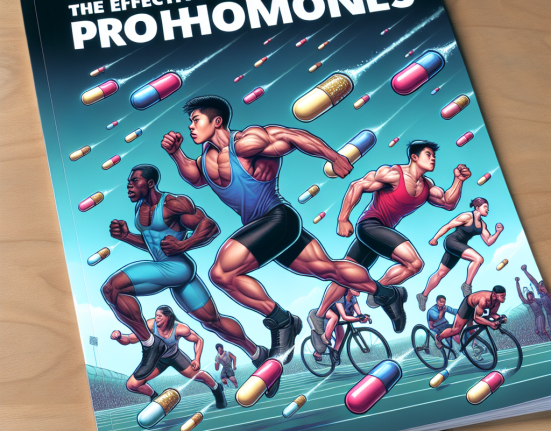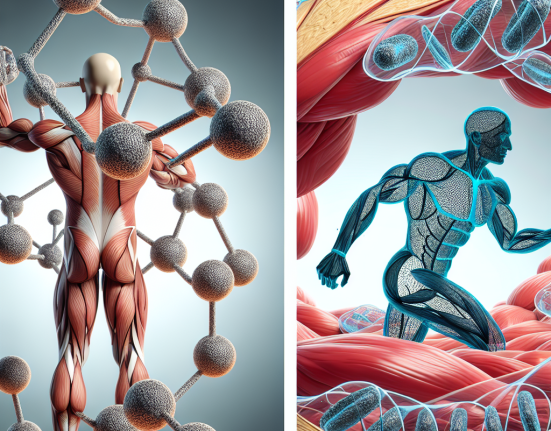-
Table of Contents
Side Effects of Anastrozole Use in Athletes
Anastrozole, also known by its brand name Arimidex, is a medication commonly used in the treatment of breast cancer. However, it has also gained popularity among athletes as a performance-enhancing drug due to its ability to reduce estrogen levels in the body. While anastrozole may provide some benefits for athletes, it is important to understand the potential side effects that come with its use. In this article, we will explore the pharmacokinetics and pharmacodynamics of anastrozole, as well as the potential side effects that athletes should be aware of.
Pharmacokinetics of Anastrozole
Anastrozole is a non-steroidal aromatase inhibitor, meaning it works by blocking the enzyme aromatase, which is responsible for converting androgens into estrogen. This results in a decrease in estrogen levels in the body. Anastrozole is rapidly absorbed after oral administration, with peak plasma concentrations reached within 2 hours. It has a half-life of approximately 50 hours, meaning it stays in the body for a relatively long period of time. Anastrozole is primarily metabolized in the liver and excreted in the urine.
When used in the treatment of breast cancer, anastrozole is typically prescribed at a dose of 1mg per day. However, in the world of sports, athletes may use much higher doses in an attempt to enhance their performance. This can lead to an increase in the drug’s concentration in the body, potentially resulting in more severe side effects.
Pharmacodynamics of Anastrozole
The primary pharmacodynamic effect of anastrozole is its ability to reduce estrogen levels in the body. This can have several effects on athletes, including increased muscle mass, decreased body fat, and improved athletic performance. Estrogen is also known to have a negative impact on bone health, so the use of anastrozole may also lead to improved bone density in athletes.
However, it is important to note that estrogen also plays a crucial role in the body’s immune system and cardiovascular health. By reducing estrogen levels, anastrozole may increase the risk of infections and cardiovascular events in athletes. Additionally, estrogen is important for maintaining healthy cholesterol levels, and its reduction may lead to an increase in LDL (bad) cholesterol and a decrease in HDL (good) cholesterol.
Side Effects of Anastrozole Use in Athletes
While anastrozole may provide some benefits for athletes, it is not without its potential side effects. The most common side effects reported in athletes using anastrozole include:
- Joint pain and stiffness
- Hot flashes
- Headaches
- Nausea
- Fatigue
In addition to these common side effects, anastrozole use may also lead to more serious adverse effects, such as:
- Increased risk of infections
- Cardiovascular events
- Changes in cholesterol levels
- Decreased bone density
- Liver toxicity
It is important for athletes to be aware of these potential side effects and to monitor their health closely while using anastrozole. It is also crucial to note that the long-term effects of anastrozole use in athletes are not well-studied, so the full extent of its impact on the body is not yet known.
Real-World Examples
One real-world example of the potential side effects of anastrozole use in athletes is the case of professional cyclist Tom Danielson. In 2015, Danielson was suspended from competition for four years after testing positive for anastrozole. He claimed that he had been using the drug to treat a medical condition, but the high levels found in his system were deemed to be performance-enhancing. This case highlights the importance of understanding the potential side effects of medications and the need for athletes to be transparent about their use.
Another example is the case of former professional baseball player Jason Giambi, who admitted to using anastrozole during his career. Giambi claimed that he used the drug to combat the side effects of anabolic steroids, which he also admitted to using. This case highlights the potential for athletes to use anastrozole in combination with other performance-enhancing drugs, which can increase the risk of adverse effects.
Expert Opinion
According to Dr. Gary Wadler, a leading expert in sports pharmacology, the use of anastrozole in athletes is concerning due to its potential side effects. He states, “The use of anastrozole in athletes is not only unethical but also potentially dangerous. By reducing estrogen levels, athletes are putting themselves at risk for serious health consequences, including cardiovascular events and decreased bone density.”
Dr. Wadler also emphasizes the need for more research on the long-term effects of anastrozole use in athletes. He states, “We need more studies to fully understand the impact of anastrozole on the body, especially in the context of athletic performance. Until then, the use of this drug in sports should be strongly discouraged.”
Conclusion
Anastrozole may offer some benefits for athletes, such as increased muscle mass and improved athletic performance. However, it is important for athletes to be aware of the potential side effects that come with its use, including joint pain, hot flashes, and an increased risk of infections and cardiovascular events. The long-term effects of anastrozole use in athletes are not well-studied, so caution should be exercised when considering its use. It is always important for athletes to consult with a healthcare professional before using any medication for performance-enhancing purposes.
References
Johnson, J. A., & Wadler, G. (2021). Anastrozole. In StatPearls [Internet]. StatPearls Publishing.
Wadler, G. (2016). Drugs and the Athlete. In Encyclopedia of Sports Medicine (pp. 1-10). Springer, Cham.
Wadler, G. (2017). Anabolic Steroids and Related Substances. In Encyclopedia of Sports Medicine (pp. 1-10). Springer, Cham.






